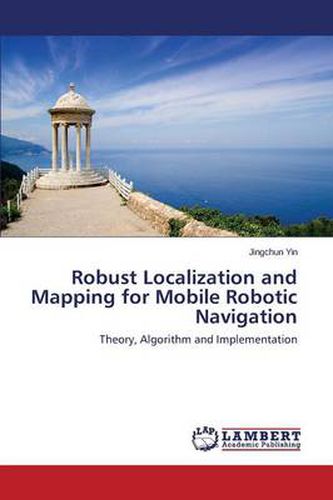Readings Newsletter
Become a Readings Member to make your shopping experience even easier.
Sign in or sign up for free!
You’re not far away from qualifying for FREE standard shipping within Australia
You’ve qualified for FREE standard shipping within Australia
The cart is loading…






This title is printed to order. This book may have been self-published. If so, we cannot guarantee the quality of the content. In the main most books will have gone through the editing process however some may not. We therefore suggest that you be aware of this before ordering this book. If in doubt check either the author or publisher’s details as we are unable to accept any returns unless they are faulty. Please contact us if you have any questions.
How can mobile robot navigate autonomously without the knowledge of its own state of pose and the model of the surrounding environment? Simultaneous Localization and Mapping (SLAM) is the mobile robot’s significant and critical perceptual capability to achieve autonomous navigation, and it is applied in a wide range of application fields. Graph-based SLAM constructs a hierarchical topological graph to address the issues of localization and mapping, where the local relative spatial displacement of roto-translation and the global trajectory of the mobile robot are estimated, respectively. Then each local map can be transformed and integrated to the unique global frame for the construction of the global map. The theory, algorithm, and implementation of Graph-SLAM are explained in detail in this book. Scan matching is performed to estimate the local relative roto-translation, batch optimization is executed to estimate the global mobile robot’s trajectory, and the global line-feature-based mapping is applied to construct the global line-feature model of the environment. The results in the experiments will verify the effectiveness of the proposed graph-based SLAM algorithm.
$9.00 standard shipping within Australia
FREE standard shipping within Australia for orders over $100.00
Express & International shipping calculated at checkout
This title is printed to order. This book may have been self-published. If so, we cannot guarantee the quality of the content. In the main most books will have gone through the editing process however some may not. We therefore suggest that you be aware of this before ordering this book. If in doubt check either the author or publisher’s details as we are unable to accept any returns unless they are faulty. Please contact us if you have any questions.
How can mobile robot navigate autonomously without the knowledge of its own state of pose and the model of the surrounding environment? Simultaneous Localization and Mapping (SLAM) is the mobile robot’s significant and critical perceptual capability to achieve autonomous navigation, and it is applied in a wide range of application fields. Graph-based SLAM constructs a hierarchical topological graph to address the issues of localization and mapping, where the local relative spatial displacement of roto-translation and the global trajectory of the mobile robot are estimated, respectively. Then each local map can be transformed and integrated to the unique global frame for the construction of the global map. The theory, algorithm, and implementation of Graph-SLAM are explained in detail in this book. Scan matching is performed to estimate the local relative roto-translation, batch optimization is executed to estimate the global mobile robot’s trajectory, and the global line-feature-based mapping is applied to construct the global line-feature model of the environment. The results in the experiments will verify the effectiveness of the proposed graph-based SLAM algorithm.